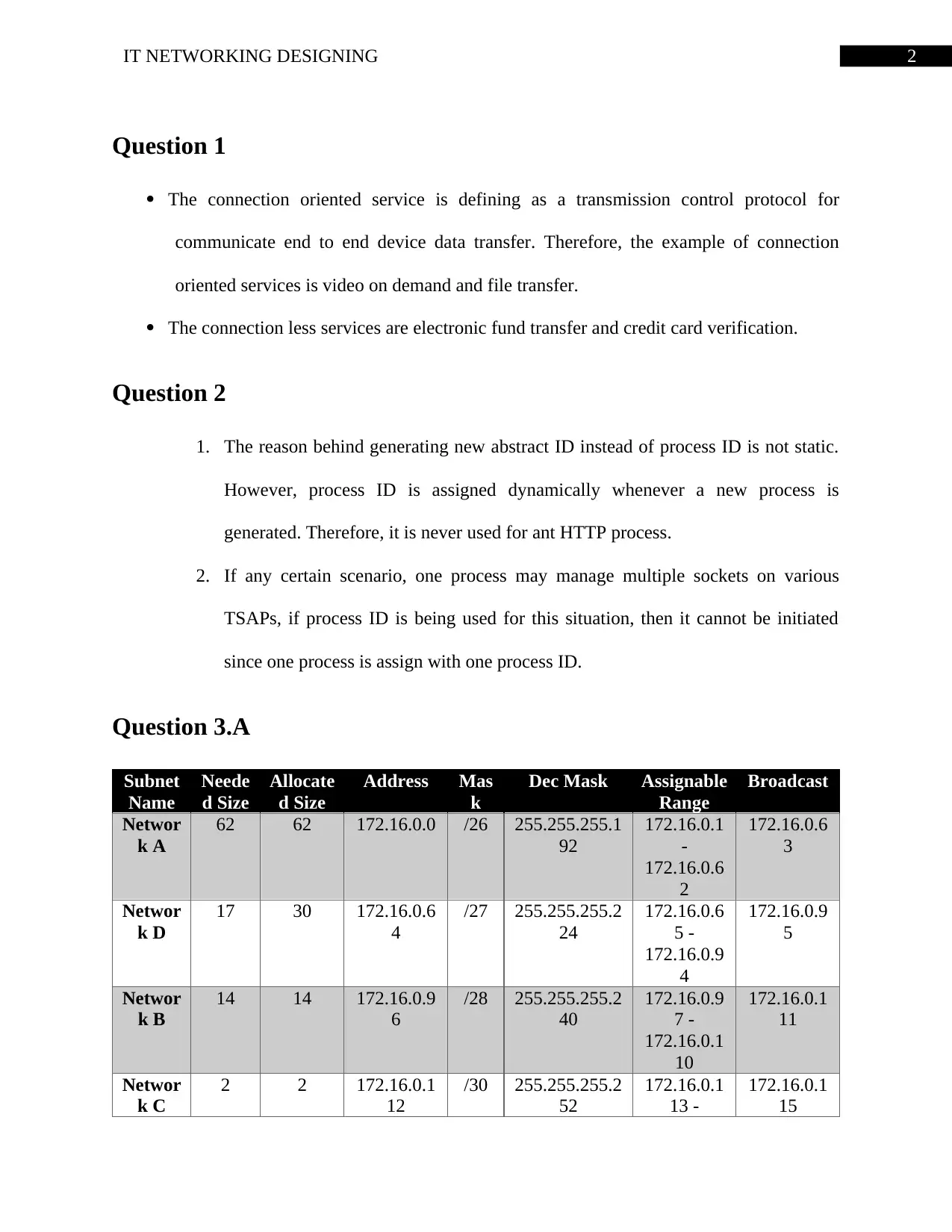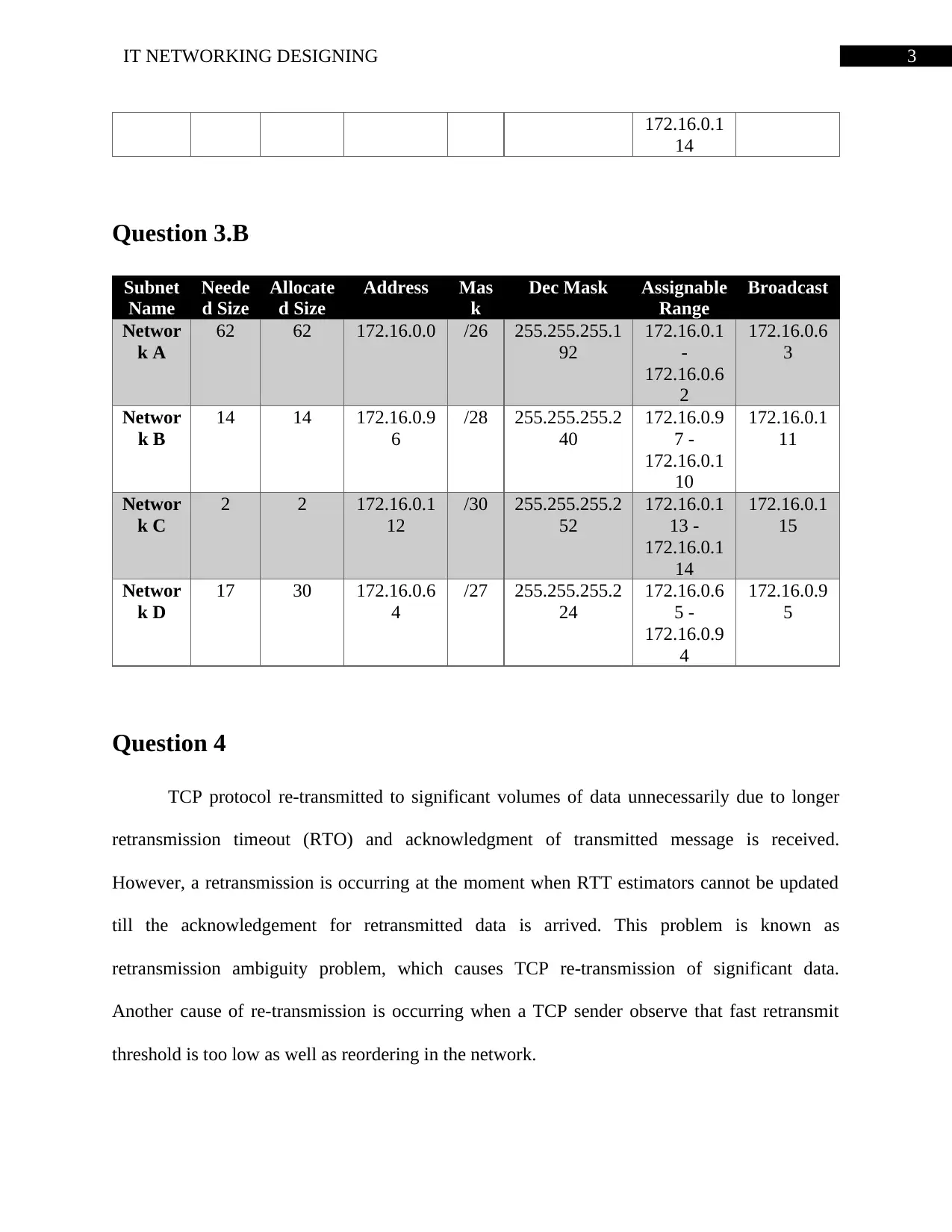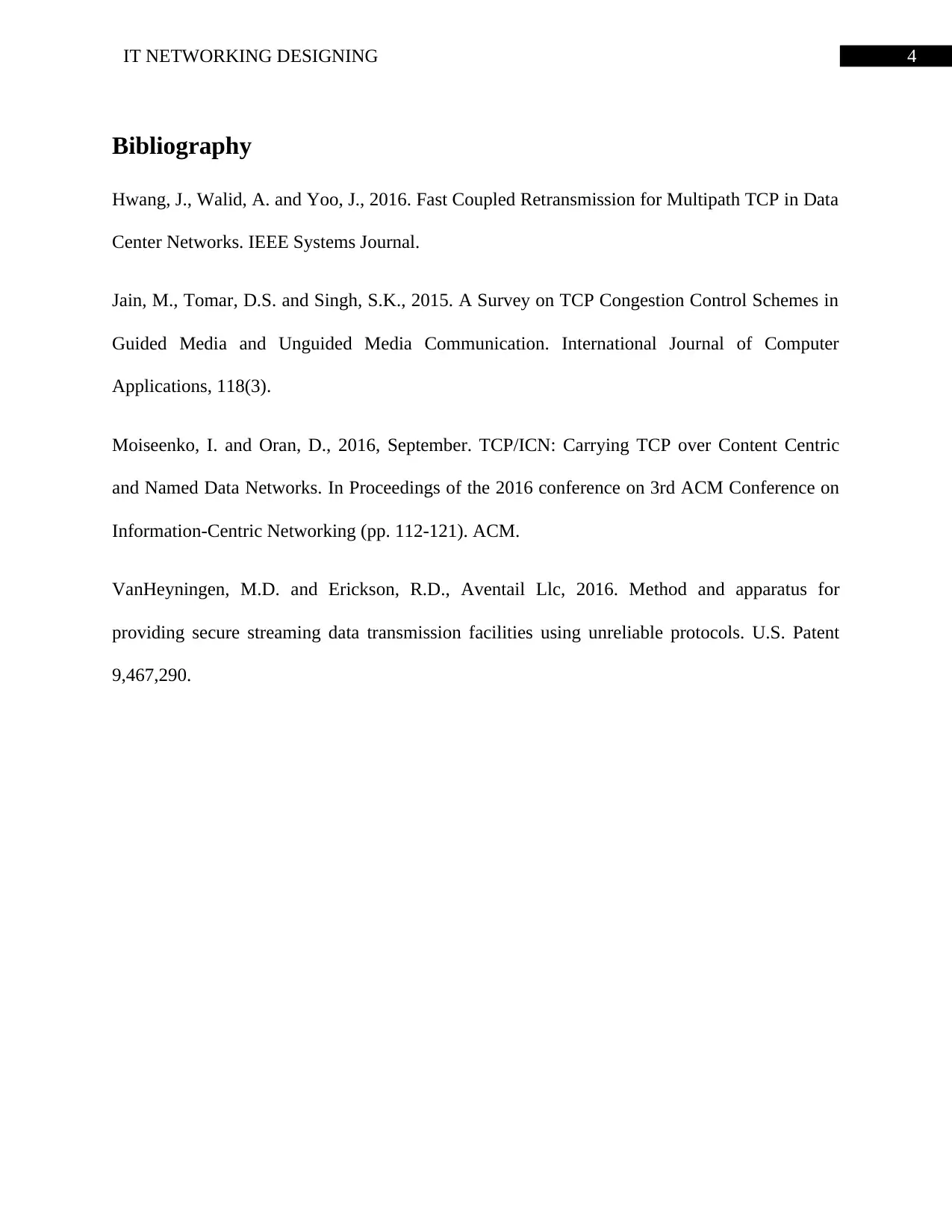ID Allocation Challenges in HTTP Processes with Multiple Sockets
VerifiedAdded on 2020/04/21
|5
|548
|101
AI Summary
The assignment focuses on key aspects of IT networking designing. Question 1 differentiates between connection-oriented services like video on demand and file transfer, and connection-less services such as electronic fund transfers and credit card verification. Question 2 addresses the use of dynamic process IDs over static ones for HTTP processes that may handle multiple sockets across various TSAPs, highlighting efficiency concerns with single-process ID assignment. In Question 3.A and 3.B, subnet design is explored by allocating sizes, masks, ranges, and broadcast addresses to Networks A through D, ensuring effective IP address management. Finally, Question 4 delves into TCP protocol retransmission issues caused by long retransmission timeouts (RTO) and acknowledgment delays leading to the retransmission ambiguity problem. The assignment concludes with bibliographic references providing further reading on network design topics.
1 out of 5












![[object Object]](/_next/static/media/star-bottom.7253800d.svg)